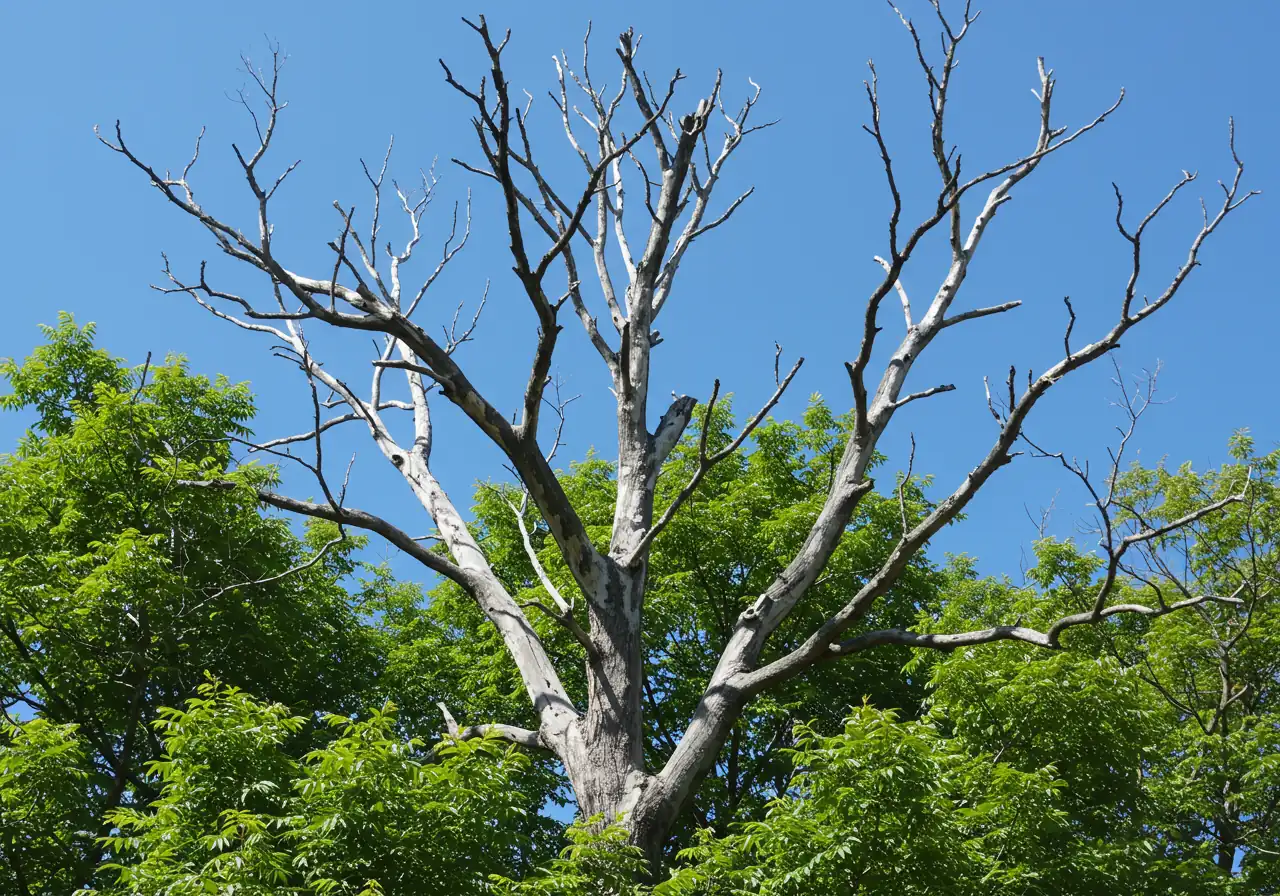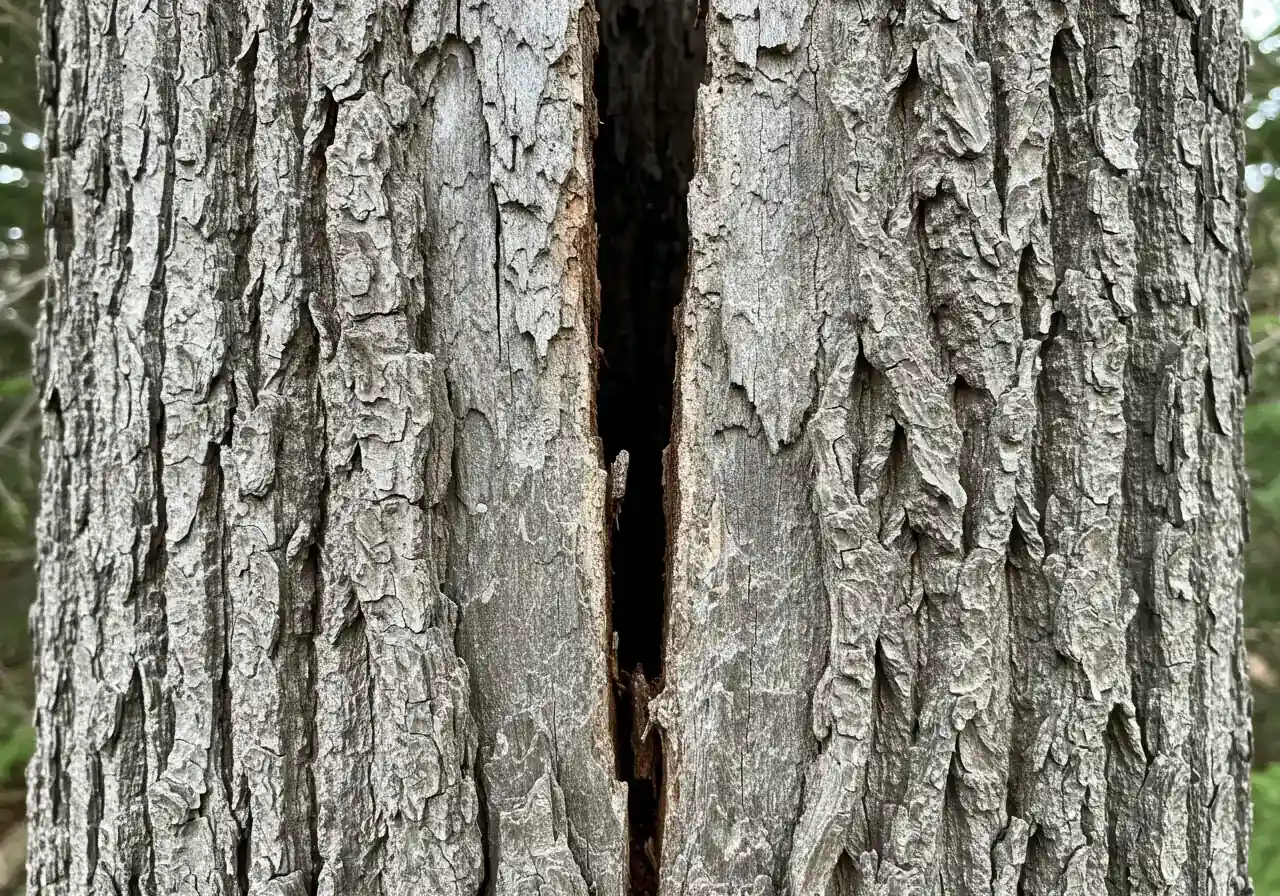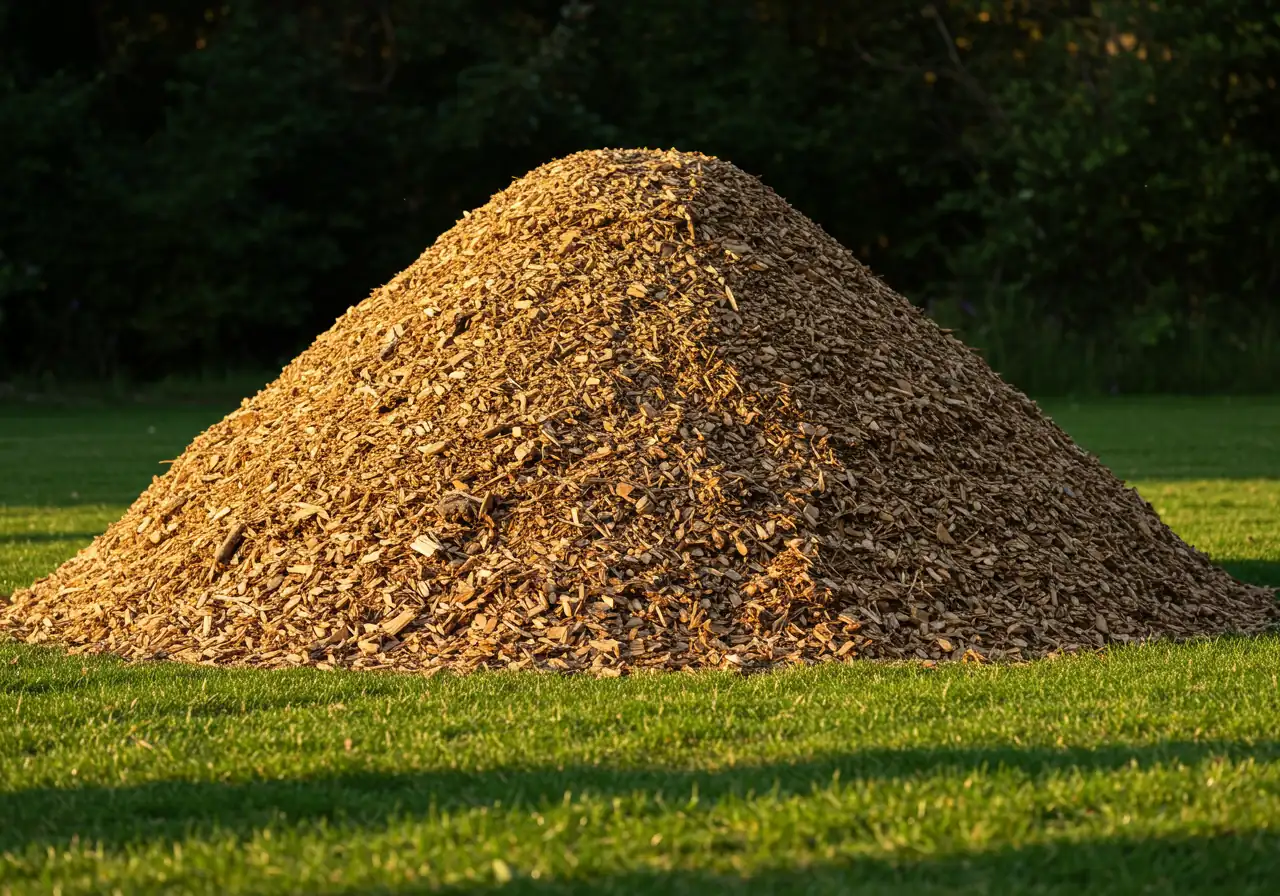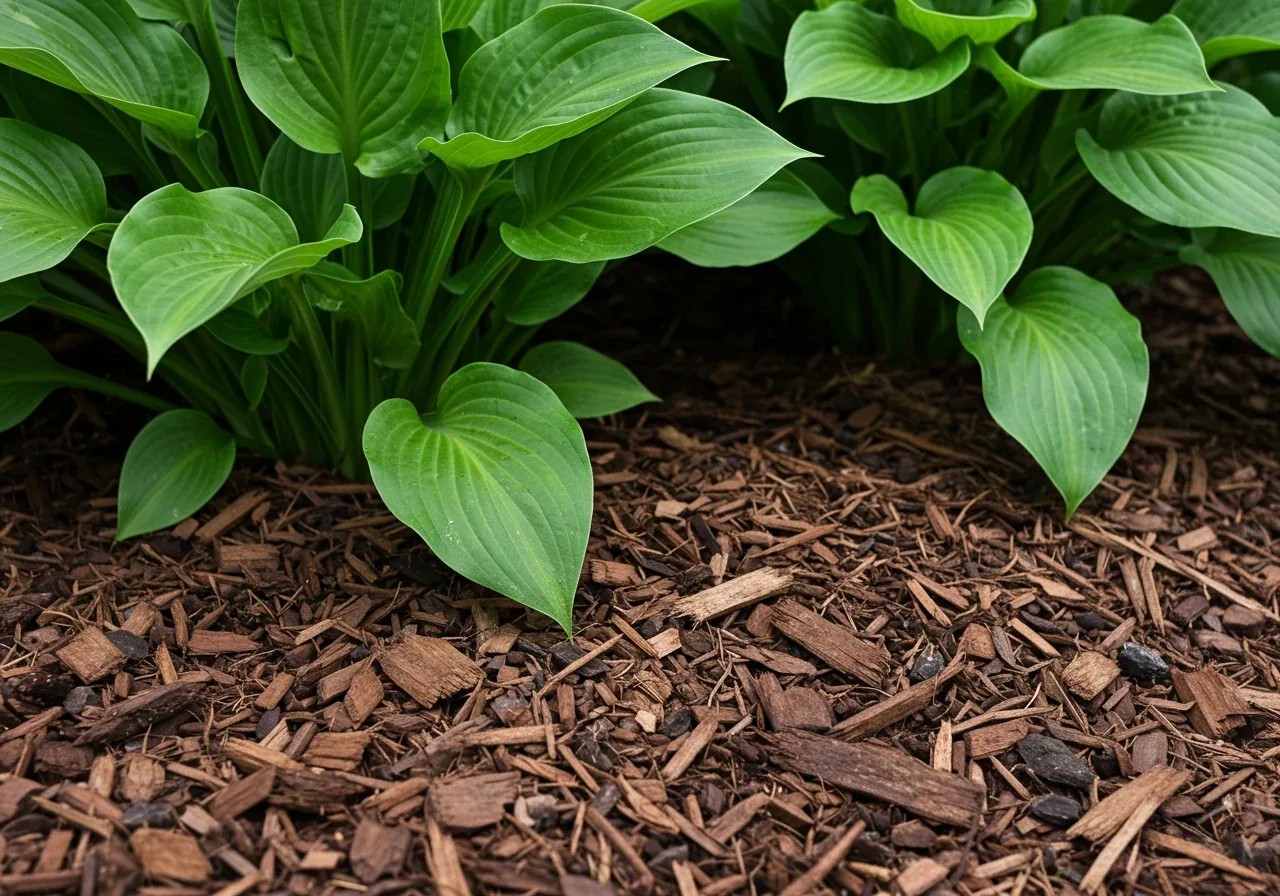Safe Tree Removal in Richmond: Avoid Storm Damage (49)
Quick Summary:
- Recognize warning signs of hazardous trees (deadwood, cracks, lean, fungus).
- Understand the dangers of DIY tree removal – always hire insured professionals.
- Learn the professional tree removal process, from assessment to cleanup.
- Explore eco-friendly options for wood debris and stump removal.
- Know when permits might be required in the Ottawa/Richmond area.
Worried about a tree on your property? Don’t wait for the next storm! Request a free estimate today for professional tree assessment and removal services.
Introduction: Keeping Richmond Trees Standing Tall (Especially When the Wind Howls!)
Hello Richmond! Living here, just a stone’s throw from Ottawa, we certainly get our share of *dramatic* weather, don’t we? Especially that wind – feels like it has a personal vendetta against garden gnomes and loose shingles sometimes! While we might laugh about it later (maybe while retrieving the recycling bin from down the street), strong winds are no joke for our lovely trees.
That beautiful silver maple gracing your front lawn or the line of cedars defining your property adds immense value and charm to your landscaping. But if a tree isn’t strong and healthy, a big storm rolling through (like the ones that also rattle nearby Manotick and Greely) can turn it into a serious hazard. We’re talking potential damage to your home, car, or that carefully tended garden shed. Yikes! Nobody wants to deal with *that* kind of cleanup. Maybe you’ve seen some impressive cleanups on our Transformations page?
This section is dedicated to helping you keep those trees *standing tall* and safe, even when the weather gets wild. We’ll share practical tips and easy checks, rooted in smart gardening and tree care practices, to ensure your leafy friends weather the storms safely. Let’s keep our Richmond yards beautiful *and* secure, protecting both your property and your peace of mind!
Why Your leafy Neighbours in Richmond Might Need a Check-Up: Ottawa’s Weather Woes
Alright, let’s chat about something we all know well here in Richmond and across the Ottawa region: our truly *unique* weather. One minute we’re basking in sunshine, the next we’re bracing for… well, pretty much anything! While this keeps life interesting, our four-season weather drama, especially those wild swings, can put serious stress on your trees. For more about us and how we handle local conditions, check out our About Us page.
Think about those lovely deep freezes followed by surprise thaws, even mid-winter. This freeze-thaw cycle doesn’t just make our roads bumpy; it can heave the soil around tree roots, potentially causing damage below ground. It’s a bit like how trapped water can wreak havoc on sprinkler systems if they aren’t prepped for the cold – a good reason to learn how to . Tree roots exposed to this repeated stress can become weakened or injured.
Then there are the *other* joys: heavy, wet snow clinging to branches, or worse, those infamous ice storms that turn our neighbourhoods into glassy (and hazardous) wonderlands. All that weight can snap limbs, especially on trees common in our area like Maples, Ash, or even mature Birches. Factor in the gale-force winds that seem to accompany many storms rolling through from places like Manotick, and you have a perfect recipe for potential tree failure. Even heavy spring downpours can be problematic, saturating the ground and potentially stressing root systems, especially if you battle poor drainage. If pooling water sounds familiar in your flower beds, you might find ideas on useful; similar waterlogged conditions aren’t great for tree roots either. For reliable weather forecasts, check Environment Canada’s Ottawa page.
Over time, this weather-related stress can contribute to creating a *hazard tree*. That’s simply a tree with structural problems – maybe dead or dying branches, significant lean, cracks in the trunk, or root issues – that make it more likely to fall and potentially damage your house, fence, car, or heaven forbid, injure someone.
This is exactly why giving your trees a regular once-over is so important here. Think of it as preventative maintenance! Catching a weak branch, signs of disease, or root disturbance early is far easier (and cheaper!) than dealing with the aftermath of a fallen tree. Adding a quick tree check to your seasonal gardening routine, perhaps when you’re doing fall clean-up using tips like these , or when prepping for the growing season with advice such as Osgoode Garden Maintenance Expert Spring Care Tips, can make a huge difference. Not sure exactly what to look for? Getting a professional eye on your leafy giants through expert Our Landscaping and Gardening Services can offer real peace of mind. Keeping your Richmond trees healthy isn’t just about looks; it’s about safety too!
Playing Detective: Spotting the Warning Signs Your Tree is Sending



Okay, time to put on your detective hat – your *tree* detective hat, that is! Your trees can’t exactly tap you on the shoulder and say, “Excuse me, but my south-facing branch is feeling a bit dodgy.” But they *do* send out clues, little SOS signals that tell you something might be wrong. Catching these early warning signs is key to preventing a small issue from turning into a big, expensive headache, especially with the kind of blustery winds and ice we sometimes get here in Ottawa. Think of it as part of your regular landscaping upkeep, similar to what our teams do during a Metcalf Property Cleanup Service.
Here’s what your inner Sherlock Holmes should look for on your next garden stroll:
- The Walking Deadwood: Are there branches with no leaves in summer when the rest of the tree is green? Do they look dry, brittle, or maybe a different colour? That’s deadwood, folks. It’s weak and often the first thing to snap off in a storm, potentially landing on your fence or shed. Keeping an eye out for this during routine yard work, similar to the tasks involved in our specialized Embrun Garden Clean Up Service, is a smart move.
- Cracks and Splits: Look closely at the trunk and where large branches connect. Deep cracks or splits are like fault lines, seriously weakening the tree’s structure. Wind or heavy ice can easily cause these areas to fail. Sometimes these are obvious, other times they hide on the back side of the tree, so walk all the way around!
- The Leaning Tower of Trees-a: Has your tree suddenly started leaning *more* than usual? Or is there cracking or heaving soil on the side opposite the lean? This could signal root problems. A gradual, long-term lean might be stable, but sudden changes are a red flag. Our notorious freeze-thaw cycles, particularly in areas around Ottawa like Greely or Kars with heavier clay soils, can destabilize roots, making leaning a major concern.
- Fungus Among Us (and other Root Woes): Are mushrooms or other funky fungi growing on the trunk base or major roots popping out of the ground? This often indicates internal decay is happening below the surface. Also watch for soil lifting near the base or unexplained dead patches in your lawn radiating out from the tree, suggesting root damage. Healthy soil is foundational; using good quality topsoil and mulch, much like the focus in our guide to Quality Landscaping Material Selection, helps promote robust roots less prone to issues.
- Hollow Hearts: Large cavities or hollows in the trunk or main limbs might look cozy for squirrels, but they mean the tree’s structural wood is decaying from the inside out. Significant hollowing reduces strength dramatically.
- Leafy Language: Are leaves dropping way too early in the season, looking scorched without a drought, or staying dead on the branches right through winter (unless it’s an oak or beech, which normally do that)? Significant changes in leaf appearance or behaviour can signal disease, insect infestation, or severe stress affecting the tree’s overall health.
Spotting one of these signs doesn’t automatically mean disaster, but it *definitely* means it’s time for a closer look. Ignoring them is like ignoring a rattle in your car – it probably won’t fix itself and could lead to bigger problems! If you see something worrying, getting a professional opinion is your best bet. Our team offers a range of Expert Tree Care and Landscaping Services and can help diagnose potential problems before they become emergencies. Don’t hesitate to Contact Us for a Tree Assessment; we’re happy to help keep your leafy neighbours safe and sound. And when you do reach out, know that we respect your details – you can review our commitment in our Website Privacy Policy. Regular checks are a simple, yet vital part of responsible gardening and property maintenance, maybe combined with a Metcalf Yard Cleanup Service.
DIY vs. Professional Tree Removal: A Quick Risk Comparison
| Aspect | DIY Approach | Professional Service |
|---|---|---|
| Safety Risk | Very High (Injury from falls, tools, falling limbs) | Low (Trained crew, proper safety gear & protocols) |
| Property Damage Risk | High (Tree falling on structures, power lines) | Low (Controlled dismantling, rigging techniques) |
| Equipment | Often inadequate or improperly used | Specialized tools, rigging, cranes if needed |
| Insurance/Liability | Homeowner bears full responsibility for accidents/damage | Covered by professional’s liability insurance & WSIB |
| Cleanup | Difficult, time-consuming disposal of large wood/debris | Included, efficient chipping and hauling |
| Permits & Bylaws | May unknowingly violate local regulations (City of Ottawa Tree By-law) | Knowledgeable about requirements, assists with permits |
The Temptation of DIY vs. Calling in the Cavalry: Why Professional Tree Removal is Non-Negotiable
Okay, let’s be honest. When faced with a troublesome tree, the thought “Maybe I can handle this myself?” probably crosses your mind. You’ve got a chainsaw (or can borrow one), YouTube tutorials abound, and hey, think of the money you’ll save! It’s tempting, right? Especially when you’re already budgeting for other landscaping projects like maybe a new garden via our Garden Installation Service. But when it comes to tree *removal*, this is one DIY project firmly in the “Nope, Don’t Do It” category. Seriously. Think of it less like weekend gardening and more like trying to perform your own major plumbing repair – the risks are just too high and the potential mess is *huge*.
Why the hard line? Because gravity is a powerful force, and trees rarely fall exactly where you expect them to, especially large ones. Here’s a reality check on the DIY route:
- Ouch Factor: The risk of serious injury from falls, falling branches, or chainsaw mishaps is incredibly high for the inexperienced. Hospital visits are *way* more expensive than hiring pros.
- Crash Landing: That tree could easily end up smashing your roof, fence, car, garage, or neighbour’s prize-winning petunias. Oops. Repair bills can skyrocket fast.
- Power Problems: Hitting power lines? That’s not just costly, it’s extremely dangerous for you and the whole neighbourhood. Emergency services and hydro crews don’t come cheap.
- The Wrong Tools: Your trusty pruning saw isn’t cut out (pun maybe intended!) for felling a mature maple. Professionals have specialized rigging, cranes if needed, safety gear, and the know-how to use them correctly.
- Whoops, You’re Liable: If your DIY attempt goes wrong and damages neighbour property or injures someone, *you* are likely responsible. Your home insurance might have serious questions about covering self-inflicted tree removal chaos.
Now, contrast that with calling in the professional cavalry. Reputable tree removal services in the Ottawa area are staffed by trained individuals, often including certified arborists. They understand tree physics, disease patterns, and the safest methods for dismantling a tree, especially tricky ones near structures.
Crucially, legitimate professionals carry full liability insurance and WSIB coverage. *Always* ask for proof before hiring anyone! This protects *you* if anything unexpected happens during the job. Reputable companies operate under clear guidelines, often detailed in their company Terms and Conditions, outlining their responsibilities and coverage. Check out reviews too, like those on our Google Business Profile.
They also handle the entire process efficiently, from the safe felling right through to stump grinding (if desired) and complete site cleanup. They’ll leave your yard looking sharp, often tidier than you might achieve even with a dedicated Marionville Property Cleanup Service focusing on general debris! You won’t be stuck figuring out how to haul away massive logs or dealing with a mountain of branches, unlike the hassle of sorting waste versus potentially reusable garden resources which you’d normally consider during Landscaping Material Selection.
Plus, pros are familiar with local regulations. Tree removal bylaws can vary, sometimes requiring permits for removing trees over a certain size or specific species, even between nearby areas like Nepean and Osgoode within Ottawa. Professionals help navigate this paperwork maze for you. Another good resource for local environmental guidelines is the Rideau Valley Conservation Authority.
Ultimately, hiring professionals for tree removal isn’t just another expense; it’s an essential investment in the safety of your family, your property, and your neighbours. It’s a critical part of responsible property ownership, fitting alongside regular Expert Garden Maintenance. Trust us, when that hazardous tree is safely down and carted away, you’ll be breathing a huge sigh of relief and mentally sending a big ‘Thank You‘ note to your future self for making the smart, safe call. Don’t gamble with chainsaws and gravity – call the pros.
Demystifying De-branching: What Happens During Professional Tree Removal

So, you’ve decided a tree needs to come down. Maybe it’s become a hazard, maybe it’s interfering with your landscaping plans, or perhaps it’s just seen better days. While the decision might be clear, the *process* of professional tree removal can seem a bit like a secret mission involving ropes, chainsaws, and maybe a touch of magic. Let’s pull back the curtain and demystify what actually happens when the pros arrive! Think of it as the behind-the-scenes tour of keeping your Ottawa property safe.
Step 1: Assessment & Planning
A tree care professional visits to assess the tree, surroundings (power lines, buildings), discuss methods, answer questions, and provide a quote. Options like stump grinding and wood removal are finalized. Manage appointments easily via our Clean Yards Customer Portal.
Step 2: Safety Setup
On removal day, the crew sets up a safe work zone, dons protective gear, and establishes communication protocols according to strict safety standards, often outlined in documents like our Terms and Conditions.
Step 3: Controlled Dismantling
Removal is usually done section by section. Climbers use ropes and rigging (or sometimes cranes) to carefully cut and lower branches and trunk pieces, avoiding damage to your property.
Step 4: Debris Management
The ground crew processes debris as it comes down. Branches are chipped (mulch often available!), logs cut. Wood is stacked or hauled away per your agreement. Efficient debris handling is key, similar to an Ottawa Yard Cleanup Service but focused on tree waste. See examples in our Photo Gallery.
Step 5: Final Cleanup & Stump Grinding
A final sweep removes sawdust and small debris. If included, stump grinding removes the stump below ground level, prepping the area for new lawn or planting. See our completed projects on the Transformations page.
Professional tree removal is a coordinated effort focused on safety, efficiency, and leaving your property in great shape. It takes the guesswork and *major* risks out of dealing with problematic trees, giving you peace of mind.
After the Fall: Eco-Friendly Options and Planting for Ottawa’s Future

Okay, so the tree is down. Your yard might feel a bit… naked. It’s like losing a piece of furniture, but, you know, leafier. While the removal might have been necessary for safety or landscaping reasons, it doesn’t have to be the end of the story for that spot! In fact, it’s a great chance to make some eco-friendly choices and plant something new for Ottawa’s future green canopy.
Eco-Friendly Wood Use
Instead of landfilling, consider reusing the wood. Larger logs can be cut for firewood. Smaller branches can be chipped into beneficial mulch for gardens – often, you can keep the chips generated during removal. A thorough Ottawa Yard Cleanup Service ensures all debris is handled appropriately, but discuss keeping chips with your removal team!
Dealing with the Stump
Leaving a stump can attract pests. Stump grinding pulverizes it below ground, allowing you to reclaim the space. This prepares the ground much better than just leaving it. Proper ground preparation is key; learn more about Soil Preparation techniques for the best results before replanting or seeding.
Planting for the Future
Replanting contributes to the local environment. Choose native species like Red Maple or Bur Oak, suited for Ottawa’s climate (check resources like Landscape Ontario for ideas). They support local wildlife and are generally hardier. Ensure a clean start with help from an Ottawa Garden Clean Up Service if needed, before planting. Consider services like our Marionville Garden Clean Up Service for specialized prep.
Considering the bigger picture, integrating these steps into your overall landscaping plan supports a more sustainable yard. Composting leaves and using natural mulch are simple ways to reduce waste and improve your soil health. Making thoughtful choices after tree removal contributes to a healthier environment. Ensuring the whole area is tidy after the work paves the way for these new beginnings; a thorough Property Clean Up leaves no trace but opportunity. It’s about turning the end of one tree’s life into the start of something beneficial and beautiful. For larger properties or more complex post-removal scenarios, a dedicated Ottawa Property Cleanup Service can manage the entire site, ensuring it’s perfectly prepped for its next green chapter. Let’s plant for a greener Ottawa, one yard at a time!
Common Causes of Tree Failure in Storms (Illustrative)
Estimated contribution factors based on post-storm assessments:
Key Takeaways: Your Richmond Tree Safety Cheat Sheet
Okay, let’s boil it all down! Here’s your quick-reference guide to keeping your Richmond trees safe and sound, especially when those Ottawa winds start showing off. Think of this as your tree safety cheat sheet – easy to remember and super important!
Key Takeaways: Your Richmond Tree Safety Cheat Sheet
- Be a Weather Watcher (and Tree Checker!): Our wild Ottawa weather puts major stress on trees. Make regular tree checks part of your landscaping routine.
- Learn the Lingo of Limbs in Trouble: Watch for deadwood, deep cracks, sudden leaning, fungus, or hollow spots. Early detection is key.
- DIY Tree Removal? Just Don’t. The risks of injury or property damage are too high. Safety first – leave big tree removal to insured professionals.
- Hire Pros You Can Trust: Always ask for proof of liability insurance and WSIB coverage. Check reviews and feedback like our Estimate Feedback Portal.
- Think Green After the Fall: Use wood chips as beneficial mulch (learn about Mulching and Edging). Grinding the stump is crucial for reclaiming space.
- Replant Responsibly: Consider native species. Focus on good Soil Preparation for new plantings or maybe a full Garden Installation Project.
FAQs: Your Richmond & Ottawa Tree Removal Questions Answered
Ah, the million-dollar question (hopefully not literally!). Costs vary quite a bit based on the tree’s size, location (is it near wires or your house?), and how tricky it is to access. Stump grinding is usually extra. The best bet is to get a specific quote – you can easily Book a Free Estimate Online to get a clear picture for your Richmond property with no surprises.
Sometimes, yes! The City of Ottawa has bylaws protecting certain trees, often based on trunk diameter (usually 50cm or more for distinctive trees) or location near water. Rules can apply across Ottawa, including areas like Barrhaven or Greely. Reputable tree services know the rules and can help guide you or handle permit applications if needed. Better safe than sorry!
Great question! Always ask for proof of *current* liability insurance and WSIB coverage – this protects you! Check online reviews (like our Google reviews) and maybe ask if they have certified arborists on staff. A professional company will be transparent about their credentials and happy to answer your safety questions before starting any landscaping work, maybe as part of a Metcalf Garden Clean Up Service consultation. Trust your gut!
Ah, the classic property line puzzle! Generally, you can trim branches overhanging your property *up to the property line*, but you can’t harm the tree. It’s always best to chat with your neighbour first – good communication prevents headaches! For trees *on* the line or removals needing access, cooperation is key. Professionals work carefully near fences.
Nope, leave the heavy lifting to the pros! Full removal typically includes cutting up the wood, chipping branches, and hauling everything away. Stump grinding is often an optional add-on. They aim to leave your yard tidy – often cleaner than a standard fall cleanup, though for general tidying our Marionville Yard Cleanup Service covers broader needs.
Absolutely! Once the stump is ground well below the surface, you can repair the area. You’ll want to remove the leftover wood chips/grindings, add fresh topsoil, and then you’re ready. It’s a perfect spot for new grass seed or even considering fresh Sod Installation for Instant Lawn Repair. Proper Soil Preparation helps ensure your new lawn integrates well with your existing Ottawa Lawn Care Program.
Conclusion: Breathe Easier Through the Next Storm in Richmond
So there you have it, Richmond neighbours! Dealing with tree troubles doesn’t have to be a nail-biting experience every time the wind kicks up over Ottawa. The real secret to weathering the storm safely? It’s all about being proactive *before* things get dicey. Think of regular tree checks and smart gardening as your first line of defence – protecting your property, your beautiful landscaping, and saving you a whole lot of post-storm stress and cleanup! Nobody enjoys discovering their shed has unexpectedly gained a large wooden hat.
Whether you’re right here in Richmond, or tending your property out near Metcalfe or Winchester, keeping an eye on your leafy giants is simply smart homeownership. Don’t guess when it comes to safety! If you’ve noticed any of those warning signs we talked about, or even if you just want a professional pair of eyes to confirm everything’s A-OK before the next big blow, give us a shout. An assessment now can prevent major headaches (and potentially wallet-aches) later. Maybe while planning your next Marionville Garden Clean Up Service?
Ready to take the next step towards peace of mind?
- Get expert advice with a professional tree health assessment. Knowing is half the battle!
- Need help with pruning, or is it time for a removal? Book your free, no-obligation estimate today!
- Have questions or just not sure where to start? Contact us – we’re happy to chat about your tree care needs.
Visit CleanYards.ca or give us a call. Let us help ensure your trees stand tall and strong, so you can relax and breathe easier, no matter what the forecast holds.

